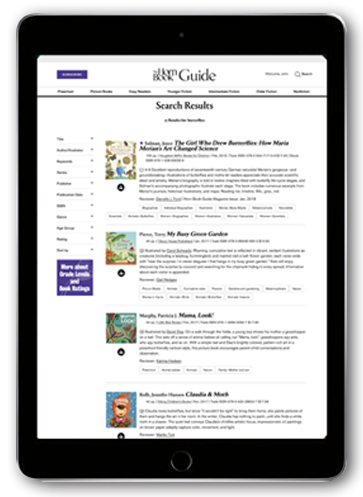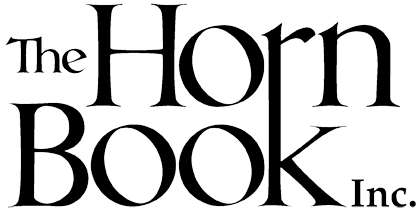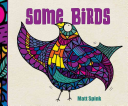Abrams/Abrams Appleseed
61 Reviews
(3)
PS
As this entertaining civics lessons reveals, everyone in Tinyville has a job to do, and the mayor helps solve problems. When there is a traffic jam, he gathers the necessary people in town to come up with a solution: building a wider and stronger bridge. The digitally colored pen-and-ink cartoon illustrations show architects working on blueprints, construction workers driving vehicles, and admirable diversity.
Reviewer: Miriam Steinberg-Egeth
(3)
PS
Illustrated by
Olivier Philipponneau
&
Raphaële Enjary.
The eponymous ONE polar bear laments his big size, only to have a succession of animals stand atop one another to show that they can be just as big. This French counting book ends with a dark twist (involving SIX sardines) that promises to deliver one very big laugh. The spare, striking illustrations use a limited palette of white, black, and aquamarine.
Reviewer: Megan Dowd Lambert
(3)
K-3
Illustrated by
Bob Shea.
"New day on the farm / muffled mooing announces / a fresh pail of milk" is the first in a series of haiku that offer clues to a familiar animal's identity; the answer is revealed with a page turn. Bright, simple, well-designed illustrations and a repetitive format make this introduction to the five-seven-five form easy to grasp. An appended note offers additional information about haiku and syllables.
Reviewer: Rebecca Reed Whidden
(3)
PS
Illustrated by
Bob Shea.
Caswell and Shea return to the format of Guess Who, Haiku and make it spooky. On each spread, a haiku plus spot art hints at a Halloween character. Turn the page for the answer and the next seventeen-syllabled riddle. A brief appended note explains haiku basics. With its cheerful colors, welcoming smiles, and participatory pattern, this ghoulish gathering is more friendly than frightful.
Reviewer: Shoshana Flax
| Horn Book Magazine Issue:
September, 2016
(4)
PS
This modest concept book explores the progression from one item to more to many. On facing pages, a house is juxtaposed with a neighborhood, but then a foldout spread reveals a city; in another example, a vegetable is pictured against a market and then a supermarket. Not all progressions make sense, but the chunky retro-style illustrations and interactive format are appealing.
Reviewer: Grace Enriquez
(3)
PS
Illustrated by
Susan Gal.
The arrival of spring, with its flowers, budding trees, baby birds, and butterflies, is celebrated with magic words (alakazam, presto chango) and gatefolds that open to show what the magic has wrought. Simple rhymes tell the story: "A silent sky, / then birds come winging. / Mumbo jumbo! / Noisy singing!" Vibrant, full-bleed mixed-media illustrations enhance the joy and the transformations.
Reviewer: Grace Worcester Greene
(3)
PS
Illustrated by
Susan Gal.
From the creators of Abracadabra, It's Spring! comes an homage to another season. Simple rhyming text incorporating magic words leads to gatefolds revealing fall's transformations: "Chipmunks dig / their burrows deep. / Sim sala bim! / They're fast asleep." Illustrated with richly colored charcoal and digital-collage art, this is a perfect choice for autumn storytimes.
Reviewer: Nancy Sheridan
(4)
PS
Illustrated by
Greg Pizzoli.
Using rhyme and wordplay, two children, a dog, and a cat highlight different things you can do with the titular fruit in each book. While many of the descriptions are clever and creative, others are peculiar and force the rhyme (e.g., "You can snuggle it [an apple], or juggle it, or put it in a pile"). Still, the inventiveness and cartoonlike illustrations should engage young children. Review covers these titles: What's a Banana? and What's an Apple?
Reviewer: Grace Enriquez
(4)
PS
Illustrated by
Greg Pizzoli.
Using rhyme and wordplay, two children, a dog, and a cat highlight different things you can do with the titular fruit in each book. While many of the descriptions are clever and creative, others are peculiar and force the rhyme (e.g., "You can snuggle it [an apple], or juggle it, or put it in a pile"). Still, the inventiveness and cartoonlike illustrations should engage young children. Review covers these titles: What's a Banana? and What's an Apple?
Reviewer: Grace Enriquez
(4)
PS
In steady rhythm and meter, Spink highlights and contrasts general characteristics of birds: "Some birds are big, / some birds are small / and some birds are just incredibly tall." A lack of narrative flow and the didactic message that birds should not be caged hinder the text, but it is secondary; the book is primarily a graphically dynamic showcase for the Zentangle-style birds in eye-catching jewel tones.
Reviewer: Rebecca Reed Whidden
(4)
PS
Illustrated by
Christine Roussey.
A large cutout star on the cover invites young readers inside this sentimental book. After a small girl's grandma gives her a special treasure box, the girl thinks about what special things to store in it. As she ponders the things, feelings, and memories she treasures most, the simple, whimsical spreads include lift-the-flaps that reveal drawings related to the girl's joy and happiness.
Reviewer: Gail Hedges
(3)
PS
This goofy monster book offers a counterpoint to commonsense bedtime routines. "MONSTERS eat bedtime snacks. / Which snack do MONSTERS eat?" The oddball answer is "UMBRELLAS!" rather than the healthy options also displayed. The pattern continues, though some answers will be familiar to kids (e.g., monsters go potty in the toilet). Ink-and-brush illustrations, digitally colored in Photoshop, depict the friendly-looking creatures' appealing antics.
Reviewer: Sheila M. Geraty
(2)
PS
A stripped-down text follows a comical parade of produce in bright underthings, demonstrating opposite concepts: "There's big underwear and little underwear, / dirty underwear and clean underwear..." Wearing nothing but underpants and a smile, the veggies feature black-dot eyes and stick-figure arms and legs. The contrast between each vegetable's rich hue and its vibrantly toned underwear adds energy to the minimalist compositions.
Reviewer: Kitty Flynn
| Horn Book Magazine Issue:
May, 2015
(3)
PS
An unseen narrator yells at Tickle Monster claiming not to be scared. The monster, consisting of bold, flat shapes against a clean black background, is taken apart one piece at a time and rearranged into a homey scene. This descendant of Emberley's Go Away, Big Green Monster gives young readers satisfying control over their emotions and the story's outcome.
Reviewer: Maeve Visser Knoth
(4)
PS
A child plays inside for hours but finally moves outside to play "in" the rain. "Now I only want to stay out. Outside. Outdoors. Out. Out. Out." McClure illustrates the simple, spare text with dramatic, beautifully designed cut-paper art; the story itself, and the main character, are much less compelling.
Reviewer: Maeve Visser Knoth
(3)
PS
Mom gives her three kids blank books in which they write stories: Seymour's features a hairy monster, Fiona writes poetry, and littlest Wilbur can't write yet but draws a dinosaur. The three books, progressively smaller, are bound inside "this book." The meta format is done well here, and each sibling's story is sweet, childlike, and inspiring.
Reviewer: Sarah Ellis
(3)
PS
A puppy's nose leads it and its owners on an adventure. First it smells breakfast, then the garden; it even sniffs out garbage at the park, which leads to a much-needed bath. Kids will love using the puppy's thought-bubble clues to guess the next stop. Brief text and vibrant art capture the pup's joy and energy as it runs from place to place.
Reviewer: Julie Bartynski-Fenner
(4)
PS
Illustrated by
Christine Roussey.
In this French import, a young girl explores human moods by describing her feelings ("I bob along gently like a balloon on a string...lazy and slow"), then identifying the emotion ("my heart is calm"). The colors outlining cardstock die-cut hearts vary appropriately with the emotion, but some illustrations are mysterious: why is an elephant spraying the girl on the "sad" page?
Reviewer: Gail Hedges
(4)
PS
Illustrated by
Christine Roussey.
A girl remembers how once she "was afraid of everything!" Now she has coping skills: holding Mom's hand when dogs bark, realizing she had a nightmare. Now she can listen to Dad's spooky story and reassure her little sister when she is afraid. Clean line art pairs with scribbly childlike drawings on thick cardstock; many of the book's die-cuts don't enhance page turns.
Reviewer: Gail Hedges
(3)
PS
Illustrated by
Peskimo.
The successor to Alphablock is an equally attractive, inventive board book. Readers explore the numbers from one to twenty, and each decade from there to one hundred. "Nine pieces of paper" become "Nine paper airplanes" with the turn of a chunky, die-cut page (shaped like the numeral). Most examples will be familiar to young children and the theme of transformation adds sophistication.
Reviewer: Maeve Visser Knoth
61 reviews
We are currently offering this content for free. Sign up now to activate your personal profile, where you can save articles for future viewing.























